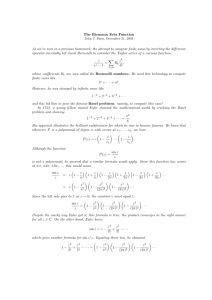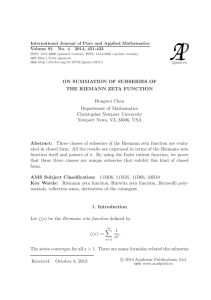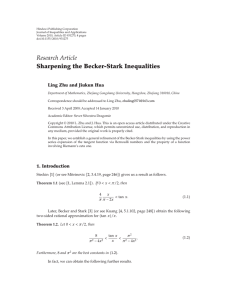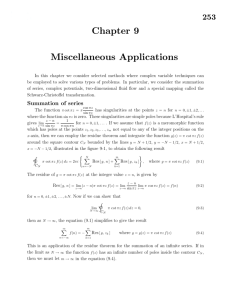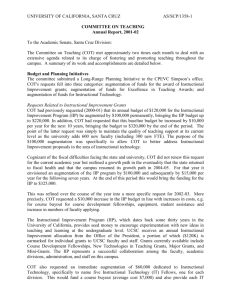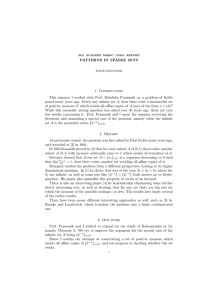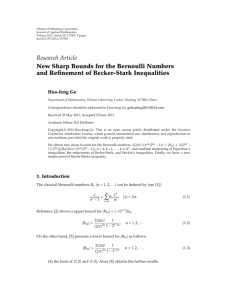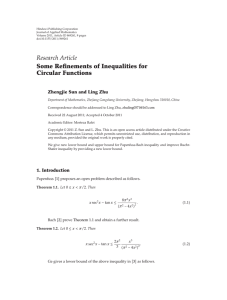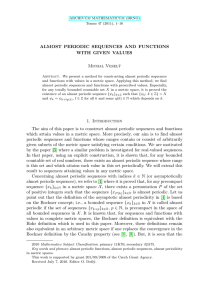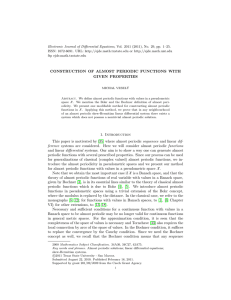The Riemann Zeta Function at Positive Even Integers
advertisement
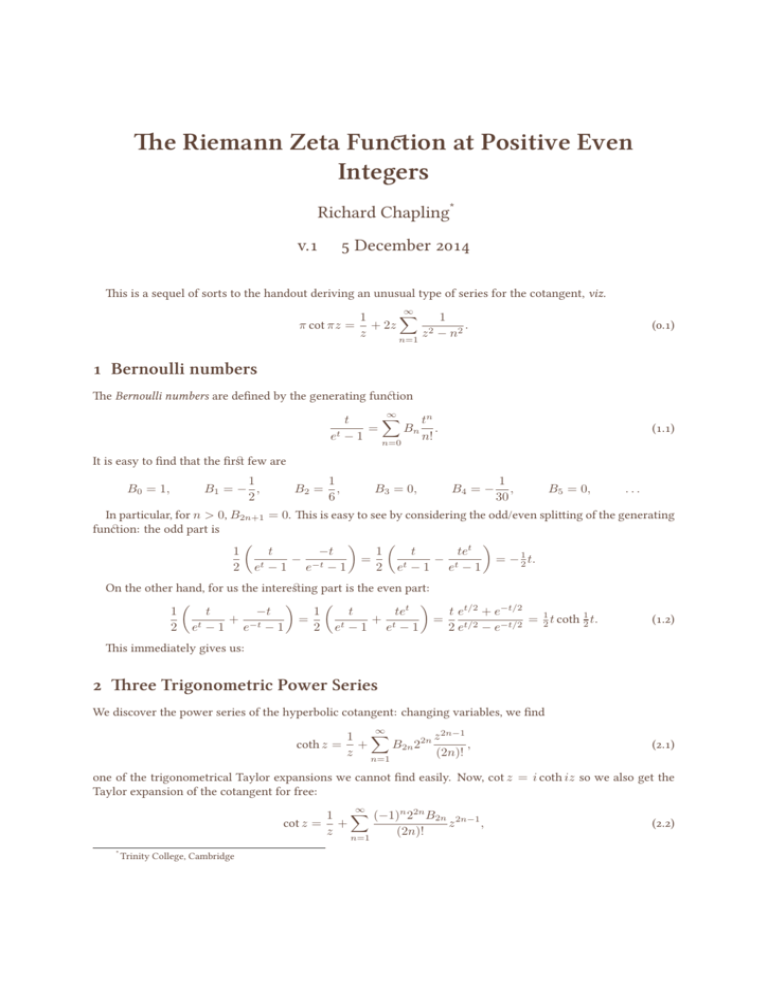
The Riemann Zeta Function at Positive Even Integers Richard Chapling* v.1 5 December 2014 This is a sequel of sorts to the handout deriving an unusual type of series for the cotangent, viz. π cot πz = ∞ ∑ 1 1 + 2z . 2 z z − n2 n=1 (0.1) 1 Bernoulli numbers The Bernoulli numbers are defined by the generating function ∞ ∑ t tn = . B n et − 1 n=0 n! (1.1) It is easy to find that the first few are B0 = 1, 1 B1 = − , 2 B2 = 1 , 6 B3 = 0, B4 = − 1 , 30 B5 = 0, ... In particular, for n > 0, B2n+1 = 0. This is easy to see by considering the odd/even splitting of the generating function: the odd part is ( ) ( ) 1 t −t 1 t tet − = − = − 12 t. 2 et − 1 e−t − 1 2 et − 1 et − 1 On the other hand, for us the interesting part is the even part: ( ) ( ) t −t 1 t tet t et/2 + e−t/2 1 + = + = = 21 t coth 12 t. t −t t t 2 e −1 e −1 2 e −1 e −1 2 et/2 − e−t/2 (1.2) This immediately gives us: 2 Three Trigonometric Power Series We discover the power series of the hyperbolic cotangent: changing variables, we find ∞ coth z = z 2n−1 1 ∑ + B2n 22n , z n=1 (2n)! (2.1) one of the trigonometrical Taylor expansions we cannot find easily. Now, cot z = i coth iz so we also get the Taylor expansion of the cotangent for free: ∞ cot z = * Trinity College, Cambridge 1 ∑ (−1)n 22n B2n 2n−1 + z , z n=1 (2n)! (2.2) [It is easy to see using the double-angle formulae that tan z = cot z − 2 cot 2z, (2.3) and so we get the tangent series almost for free as well: tan z = ∞ ∑ (−1)n−1 n=1 22n (22n − 1)B2n 2n−1 z . (2n)! (2.4) (Obviously the hyperbolic tangent is the same, sans the (−1)n−1 .) Using cot 12 z − cot z = cosec z (2.5) gives the cosecant series, ∞ cosec z = 1 ∑ 2(22n−1 − 1)B2n 2n−1 + (−1)n−1 z . z n=1 (2n)! (2.6) Secant is far less considerate, unfortunately: it has its own set of numbers, also known as the Euler numbers.1 ] 3 The Riemann Zeta Function The Riemann zeta function is defined by ζ(s) = ∞ ∑ 1 , s n n=1 ℜ(s) > 1; (3.1) its analytic continuation is easily the most important function in analytic number theory. Euler famously argued that ζ(2) = π 2 /6 using the sine product formula (discussed on the previous sheet). We shall proceed using the two equivalent expressions for the cotangent we just derived. We have, using the Binomial Theorem, ∞ ∑ 2z 2 2z 2 /n2 z 2k = − = −2 . z 2 − n2 1 − z 2 /n2 n2k (3.2) k=1 Then, the series (0.1) becomes πz cot πz = 1 + ∞ ∑ ∞ ∑ ∞ −2 n=1 k=1 ∑ z 2k = 1 + −2z 2k ζ(2k), n2k (3.3) k=1 swapping the order of summation.2 On the other hand, changing variables in the series (2.2) produces πz cot πz = 1 + ∞ ∑ (−1)k (2π)2k B2k k=1 (2k)! z 2k , (3.4) and equating coefficients gives, for k ⩾ 1, ζ(2k) = 1 Not (−1)k−1 (2π)2k B2k 2(2k)! to be confused with Euler’s other number. Or Euler’s other other number. Or Euler’s other(1 − other)−1 number show why this is allowed for |z| sufficiently small. 2 Exercise: (3.5)


